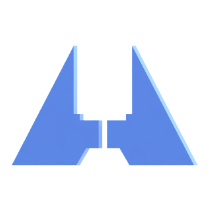Automation
Auxiliary Flotation Tables
Don’t be too quick to discount our most popular and cost-effective workflow solution.
Also designed and fabricated by Accu-Router, these heavy-duty steel tables surround the main machine table at the same height, and are tied into your compressed air. In between part programs, flotation balls are pressurized for the operator to quickly and effortlessly unload spoilboard #1 (with cut parts and scrap).

Auto Unload & Return
The main challenge with automated material handling “done right” is cost that can be hard to justify – as much as 50%+ the machine itself.
As a compromise, Accu-Router has reconfigured key components and capabilities of its fully automatic conveyor into an innovative system at 1/3 the cost.
With our auto-unload system, your Accu-Router still depends on your operator for loading and squaring uncut stacks. Powered hi-speed conveyor rolls in the machine table “pop up” at the end of each cycle, automatically moving the spoil board and cut parts laterally for sorting while the operator loads the next stack.
After sorting the spoil board is passed through a baffled dust hood with rotary brush for cleaning and re-use — either manually by the operator or with the aid of more powered hi-speed rolls.
With such variation is material quality (i.e. warped plywood), Accu-Router prefers this design to pushing cylinders or mechanical rakes offered by competition. It must stand up to long-term high production to be worthy of the name Accu-Router.
Integrated Conveyor
For those ready to seize
decisive, sustainable
competitive advantage, there’s nothing better than a High Velocity Accu-Router (new or on a re-acquired Green platform) fully integrated to our automated conveyor.
Key features of Accu-Router conveyors include:
-
Single source integration between conveyor and machine
-
Effectively doubles the output of parent machine, without adding another operator
-
Automatic unload of machine table when cutting cycle has ended
-
Single cell operator to unload cut parts and scrap
-
Clean-off station to remove dust from the carrier panel
-
Powered conveyor to relocate carrier panel into queue position
-
Automatic stacker station to re-stack carrier panel
-
Automatic infeed cylinders and powered rollers to load machine table
-
Stops on machine table automatically locates material sizes (5×10, 4×8 etc)
Highlights:
1. Accu-Router has developed a turn-key integration between the conveyor and machine. This includes electrical wiring, panel assembly, and the CNC control. The integration with the CNC control ladder architecture allows for desired safety related logic, single source code responsibility, and complete monitoring and control of the cell process. Competitors with third party conveyors and/or PC controls simply do not match up in reliability.
2. At less than 25 seconds between cycles (“chip to chip”), all the operator is asked to do is sort cut parts from scrap (offal). All other machine functions are automatic, up to doubling the output of the same manually-operated machine (up to 400 stacked panels per 8 hr shift). Whereas most routers require two operators, certain conveyor setups can function with one, reallocating that valuable labor to other areas.
3. Accu-Router uses a friction drive “pick & place” unit. Having a more simple design, it is easier to maintain than ball-screw or belt driven systems. With speed and capability becoming more important, both single or multiple panels can be stacked while the machine is in a cutting cycle. The faster the cutting cycle, the more important it is to have a fast pick & place unit. That is precisely what our design incorporates.
Integrated Conveyor cont.
4. This design moves the carrier panel(s) which is important to cycle time. A stationary spoil board on a CNC router will require multiple panels be loaded one at a time for stack cutting. This system will help lower machining time.
5. Included clean-off station has benefited from several time proven design considerations. There are air nozzles in the hood that agitate the sawdust up into the multi baffled dust-hood. This simply cleans the carrier panel off very well. This is a problem for the fixed spoil boards on competitive machines. The clean-off station is height adjustable to compensate for varying thickness panels and/or carrier panels. It is ruggedly designed and aids in keeping the work area clean.
6. The automated pick & place unit incorporates multiple spring loaded vacuum pick-up heads with a stand alone vacuum pump. A vacuum pump works better than vacuum generators in dusty environments. This design delivers high reliability.
7. The automated pick & place unit accesses a single bunk of material to be cut. There could be a second or more bunks added for near continuous production. There could even be an optional powered infeed for a single bunk station.
8. High speed powered rollers will load the machine table automatically as soon as it is clear from the previous cutting cycle. Squaring cylinders will automatically square the panel stack on the table before a new cutting cycle begins.
9. Once the unloading is accomplished, the cell operator can “send” the carrier panel under the automated clean off station for cleaning and then re-positioning back to the queuing station.
(Click photo for full YouTube Video)


